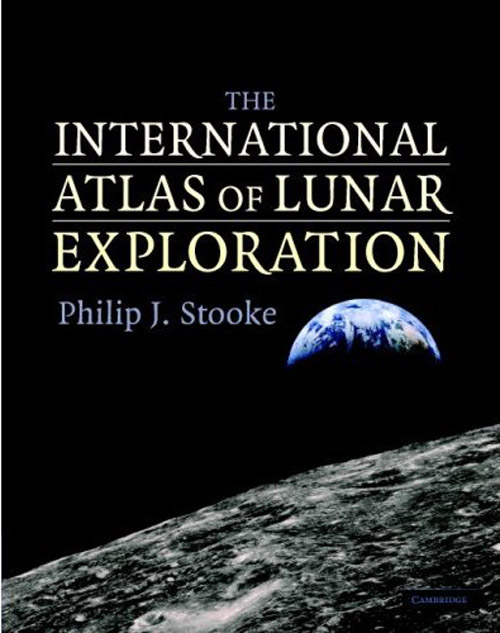Difference between revisions of "LPOD Feb 13, 2008"
(Created page with "<div id="content_view" class="wiki" style="display: block"> =MONUMENTAL LUNAR REFERENCE= <br /> LPOD-Feb13-08.jpg<br /> ''image from [http://www....") |
|||
| (2 intermediate revisions by the same user not shown) | |||
| Line 1: | Line 1: | ||
<div id="content_view" class="wiki" style="display: block"> | <div id="content_view" class="wiki" style="display: block"> | ||
=MONUMENTAL LUNAR REFERENCE= | =MONUMENTAL LUNAR REFERENCE= | ||
| − | <br /> [[Image:LPOD-Feb13-08.jpg|LPOD-Feb13-08.jpg]]<br /> ''image from [http://www.amazon.com/International-Atlas-Lunar-Exploration/dp/052181930X/ref=pd_bbs_sr_1?ie=UTF8&s=books&qid=1202849748&sr=8-1 Amazon.com]''<br /> <br /> Is it fair to review a book I've never seen? Well, I have done it [http:// | + | <br /> [[Image:LPOD-Feb13-08.jpg|LPOD-Feb13-08.jpg]]<br /> ''image from [http://www.amazon.com/International-Atlas-Lunar-Exploration/dp/052181930X/ref=pd_bbs_sr_1?ie=UTF8&s=books&qid=1202849748&sr=8-1 Amazon.com]''<br /> <br /> Is it fair to review a book I've never seen? Well, I have done it [http://www2.lpod.org/wiki/May_25,_2004 before], and here goes again. This is a magnificent cartographic history of lunar exploration containing 464 pages of maps, photos and text describing every spacecraft mission that has flown near or imaged the Moon. "Every" means all of them, including Hubble's imaging of Copernicus, Aristarchus and Taurus-Littrow, and various flybys (Nozomi, Cassini, Stardust, Hayabusa, etc) that obtained images just to see if their cameras worked. The great value of this labor of love is its thorough documentation of every lunar mission, flown or planned. Consider the Luna 13 mission of December 1966 as an example. The text summarizes the launch, flight and landing details, as well as the imaging and other experiments. Two NASA maps and two created by Phil show the landing area in progressively higher resolution, and Lunar Orbiter and another modern spacecraft image depict the landing area. Finishing the Luna 13 section are panoramas, assembled by Phil, made from all the released images. As with all his spacecraft summaries, one of Phil's maps shows the areas covered by mission imaging. A second type of history preserved and cartographically explained is exemplified by the 8 pages documenting potential Apollo landing sites being considered in 1968: 64 photos and maps illustrate sites proposed by Johnson Space Center, the US Geological Survey and the Bellcomm contractor. As wonderful as this reference book is, there are some things it isn't. It doesn't give a synopsis of the scientific discoveries of each of these missions. In fact, it couldn't for new facts and theories are still coming from fresh studies iof Apollo samples and 40 year old Orbiter images. Should you add this book to your lunar reference collection? My answer is a resounding yes, except for the price. Even with an [http://www.amazon.com/International-Atlas-Lunar-Exploration/dp/052181930X/ref=pd_bbs_sr_1?ie=UTF8&s=books&qid=1202849748&sr=8-1 Amazon] discount it is nearly twice as much as any lunar book I have ever bought, except for historical collectibles. At $152 this is not an acquisition for the casual observer, but devoted lunaphiles will treasure it for the rest of their lives. <br /> <br /> ''Chuck Wood''<br /> <br /> '''Technical Details'''<br /> I don't have the published ''Atlas'' - this review is based on a near final draft that Phil gave me in 2007. <br /> <br /> '''Related Links'''<br /> [http://selena.sai.msu.ru/Symposium/sternber.pdf Proposal] for the International Atlas (pdf)<br /> <br /> '''[[LPOD%20Index|Index]] of past LPOD's'''<br /> <br /> <br /> <br /> </div> |
Latest revision as of 13:38, 15 April 2018
MONUMENTAL LUNAR REFERENCE

image from Amazon.com
Is it fair to review a book I've never seen? Well, I have done it before, and here goes again. This is a magnificent cartographic history of lunar exploration containing 464 pages of maps, photos and text describing every spacecraft mission that has flown near or imaged the Moon. "Every" means all of them, including Hubble's imaging of Copernicus, Aristarchus and Taurus-Littrow, and various flybys (Nozomi, Cassini, Stardust, Hayabusa, etc) that obtained images just to see if their cameras worked. The great value of this labor of love is its thorough documentation of every lunar mission, flown or planned. Consider the Luna 13 mission of December 1966 as an example. The text summarizes the launch, flight and landing details, as well as the imaging and other experiments. Two NASA maps and two created by Phil show the landing area in progressively higher resolution, and Lunar Orbiter and another modern spacecraft image depict the landing area. Finishing the Luna 13 section are panoramas, assembled by Phil, made from all the released images. As with all his spacecraft summaries, one of Phil's maps shows the areas covered by mission imaging. A second type of history preserved and cartographically explained is exemplified by the 8 pages documenting potential Apollo landing sites being considered in 1968: 64 photos and maps illustrate sites proposed by Johnson Space Center, the US Geological Survey and the Bellcomm contractor. As wonderful as this reference book is, there are some things it isn't. It doesn't give a synopsis of the scientific discoveries of each of these missions. In fact, it couldn't for new facts and theories are still coming from fresh studies iof Apollo samples and 40 year old Orbiter images. Should you add this book to your lunar reference collection? My answer is a resounding yes, except for the price. Even with an Amazon discount it is nearly twice as much as any lunar book I have ever bought, except for historical collectibles. At $152 this is not an acquisition for the casual observer, but devoted lunaphiles will treasure it for the rest of their lives.
Chuck Wood
Technical Details
I don't have the published Atlas - this review is based on a near final draft that Phil gave me in 2007.
Related Links
Proposal for the International Atlas (pdf)
Index of past LPOD's